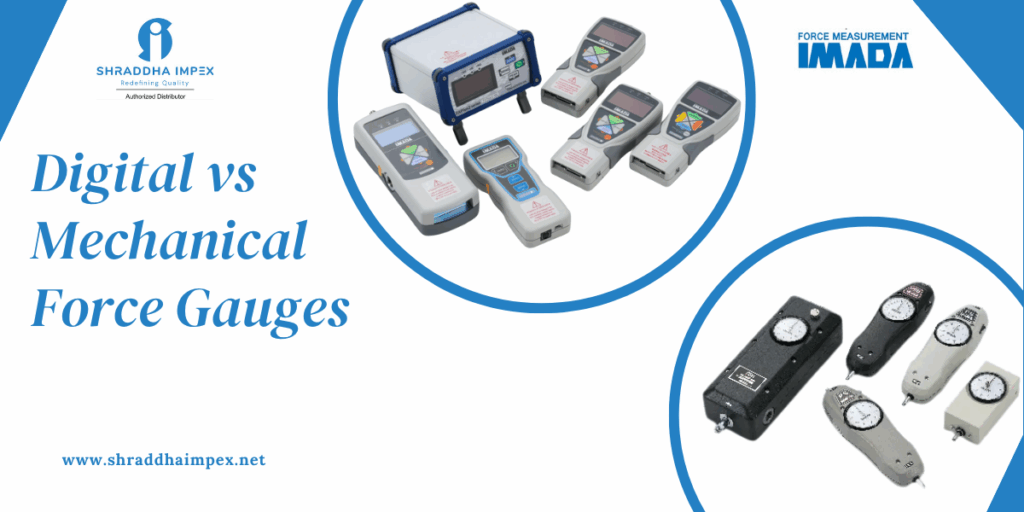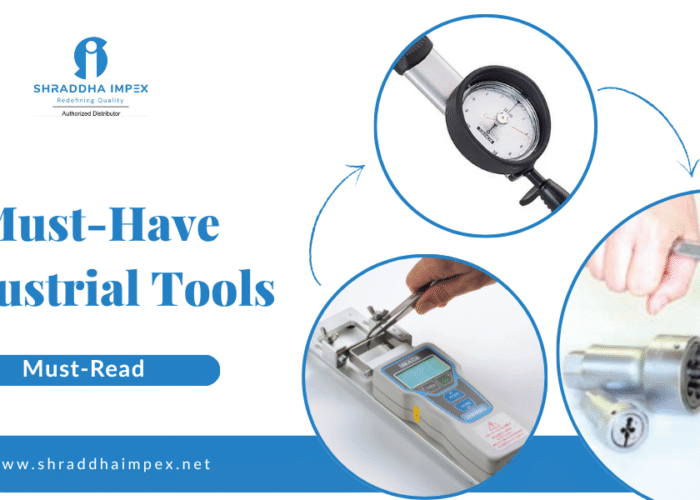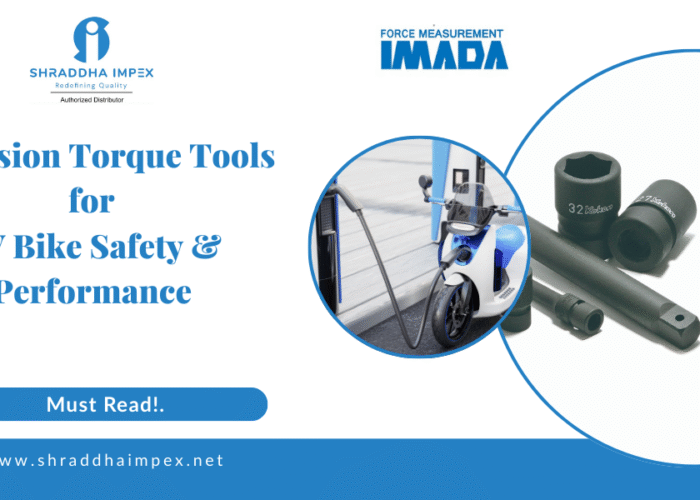Choosing the right force gauge can make your testing accurate and your work smoother. Whether you need a digital force gauge or prefer mechanical force gauges, understanding their strengths, weaknesses, and costs helps you decide. In this guide, you’ll learn how each type works, where each shines, and how to pick the best force gauge for your projects.
Why Force Measurement Matters
Accurate force measurement affects product quality, safety, and reliability. When you test springs, switches, or materials, the right tool ensures you get reliable data every time. A simple push-pull gauge gives you quick readings, but a modern digital force gauge offers more features. Knowing what each tool offers helps you match your needs with the right device.
You’ll also see how leading brands like Imada and suppliers such as Shraddha Impex fit into your decision.
How Digital Force Gauges Work
Digital testers use strain gauges or load cells to convert force into an electrical signal. This signal goes through an analog-to-digital converter, turning it into a numerical reading you see on the display. Here’s what this means for you:
- High Precision: Numbers often show decimals, giving you finer details.
- Custom Units: Switch from newtons to pounds or kilograms with a button.
- Data Logging: Save measurements inside the gauge or send them to a PC.
- Peak and Track Modes: Capture the highest force reached or follow changing forces in real time.

When you use an Imada digital force gauge, you benefit from a brand known for reliability and easy-to-read screens. Many models include built-in memory and USB connectivity so your data flows straight into your reports.
How Mechanical Force Gauges Work
- No Battery Needed: Always ready, no charging.
- Simple to Use: No menus or settings—just squeeze and read.
- Durable: Fewer electronic parts mean fewer failures.
A classic push-pull gauge can last for years without maintenance. Brands that make quality mechanical force gauges often provide rugged housings so you can use them in workshops or on the production floor.
Pros of Digital Force Gauges
- Accuracy and Resolution
- Versatility
Change units instantly. Switch from tension to compression mode with one button. - Advanced Features
- User-Friendly Display
Backlit screens and intuitive menus make it easy to operate in any light. - Calibration Alerts
Built-in reminders help you stay compliant with quality standards. - Brand Trust
An Imada force gauge or Imada digital force gauge often comes backed by support and documentation.
Pros of Mechanical Force Gauges
- Simplicity
No setup—pick up and use. - Reliability
Fewer parts to break down; great for rough environments. - Cost-Effective
Lower initial investment than most digital models. - Low Maintenance
No batteries or calibration reminders.
Mechanical tools shine when you need a push-pull gauge for quick checks. Digital models pay off when you log data or need fine resolution. If you choose a trusted brand like Imada, you know you’re getting longevity and service.
When to Choose a Digital Force Gauge
- Research and Development: You need precise data and graphs.
- Quality Control: Data logging keeps records for audits.
- Versatility: You test different products requiring multiple units.
- Frequent Calibration: Alerts help you stay on schedule.
If you want an imada force gauge setup that connects to your PC, look for models with included software. You’ll automate data collection and cut down on manual errors.
When to Choose Mechanical Force Gauges
- Shop and Field Work: No batteries to worry about.
- Budget Constraints: Low initial cost and zero power costs.
- Rugged Environments: Dust, oil, or moisture won’t stop you.
- Quick Checks: Fast, on-the-spot readings without menu navigation.
A solid mechanical force meter can handle drop tests and rough handling better than its electronic peers.
When you pit a simple spring-based force meter against an Imada digital force gauge, remember that each excels in different scenarios. Your choice depends on whether you value simplicity or advanced functionality.
Understanding Calibration
Both types need calibration to keep readings accurate. For a mechanical gauge, calibration involves adjusting a screw or replacing the spring. Digital gauges require calibration weights and software routines. Typical schedules run from every 6 to 12 months, depending on how often you use your tool and the precision you need.
Maintenance Tips
- Mechanical Gauges
- Keep them clean and dry.
- Avoid impacts to the dial or pointer.
- Check spring tension periodically.
- Keep them clean and dry.
- Digital Gauges
- Protect against moisture and dust.
- Follow calibration alerts.
- Protect against moisture and dust.
Safety Considerations
When testing high forces, use suitable fixtures and attachments. Both digital and mechanical force gauges work with hooks, chucks, and compression platens. Always follow the manufacturer’s load limits. If you exceed the rating, you risk injury and damage to your gauge.
Top Use Cases
- Automotive: Testing switch and pedal forces with a push-pull gauge.
- Medical Devices: Ensuring spring compression in syringes using a digital force gauge.
- Packaging: Checking seal strength on bottlenecks with a mechanical tester.
- Electronics: Measuring the actuation force of buttons with a precision force meter.
In each case, you choose the tool that balances accuracy, ease of use, and cost.
Brand Spotlight: Imada
Imada offers both analog and digital testers. Their mechanical range gives you reliable analog options at a lower cost. Whether you pick a classic dial gauge or a modern data-logging device, you’re backed by Imada’s support network and calibration services.
Making Your Decision
- Define Your Requirements: Accuracy, data logging, port type, and environment.
- Set Your Budget: Don’t overspend on features you won’t use.
- Consider Frequency: Daily lab use favors digital; occasional checks favor mechanical.
- Check Support: Look at the warranty, calibration service, and user manuals.
- Test for Fit: Whenever possible, demo a unit or watch an unboxing video.
By aligning your workflow with the right tool, you’ll boost efficiency and confidence in your results.
Choosing between a digital force gauge and a mechanical force gauge comes down to your specific needs. If you need precision, data logging, and versatility, go digital. If you want simplicity, durability, and a smaller budget, choose mechanical. Whatever you decide, brands like Imada offer reliable options to measure force accurately. With the right force meter in hand, you’ll achieve consistent, trustworthy measurements every time.
Next Steps
- List your measurement requirements.
- Compare features side by side using the tables above.
- Request demos or trials if available.
- Plan for calibration and maintenance.
- Make your purchase and start testing with confidence!


